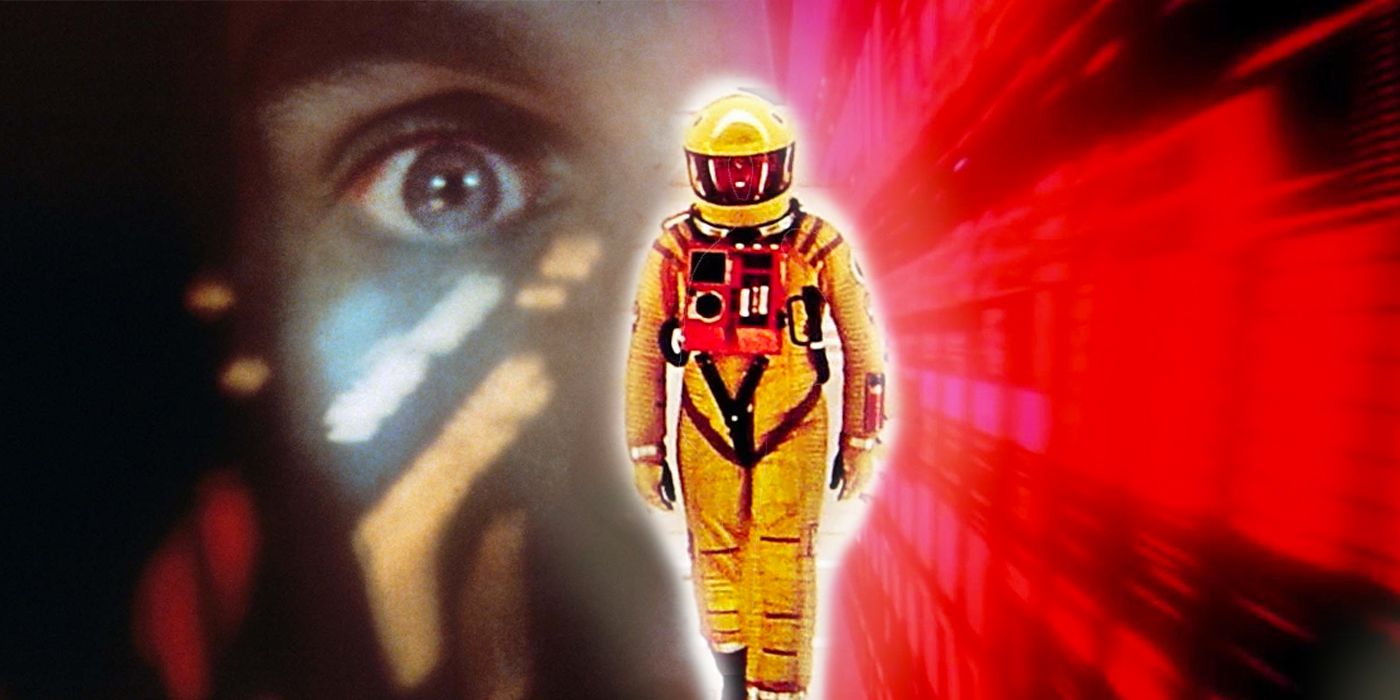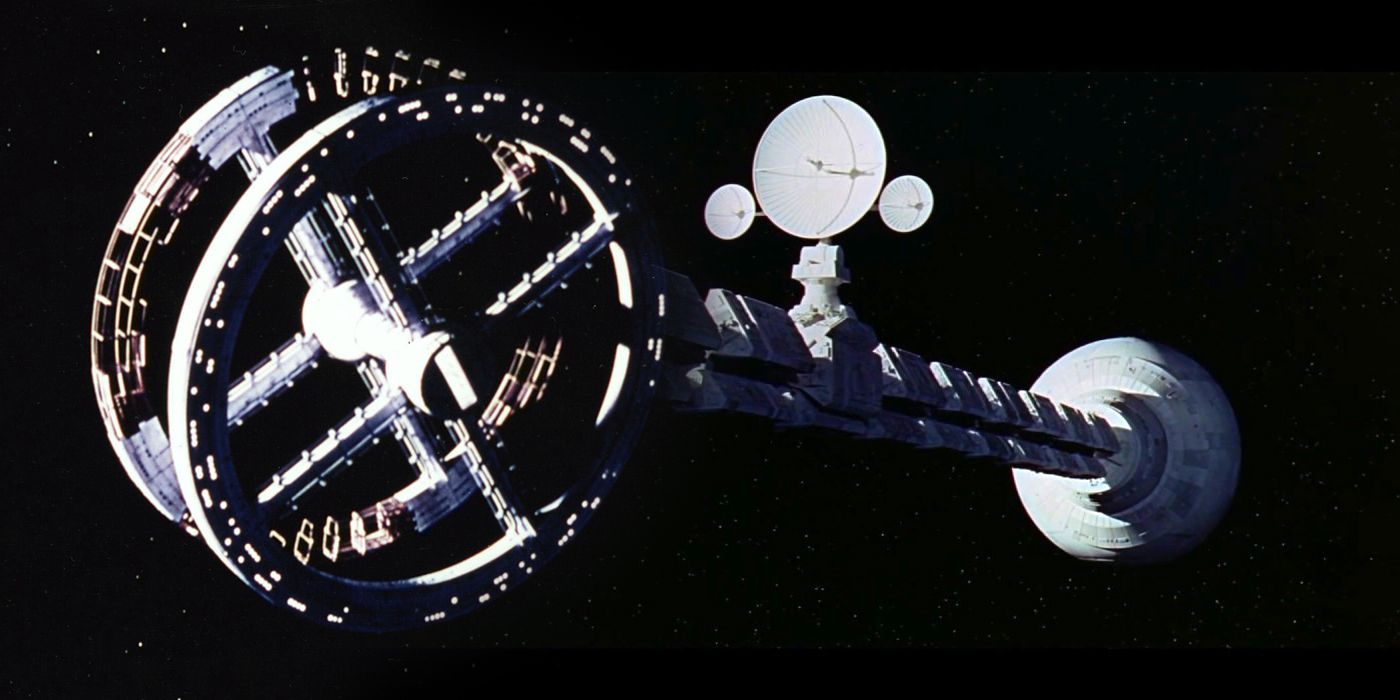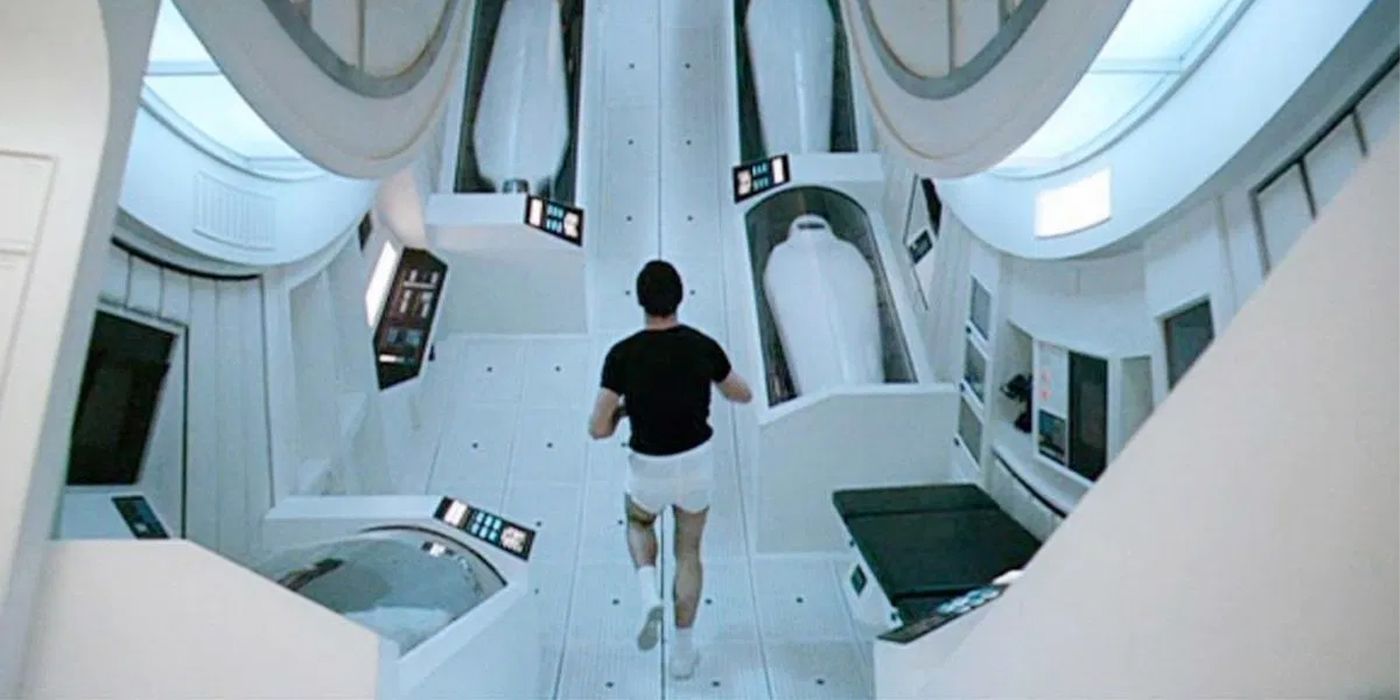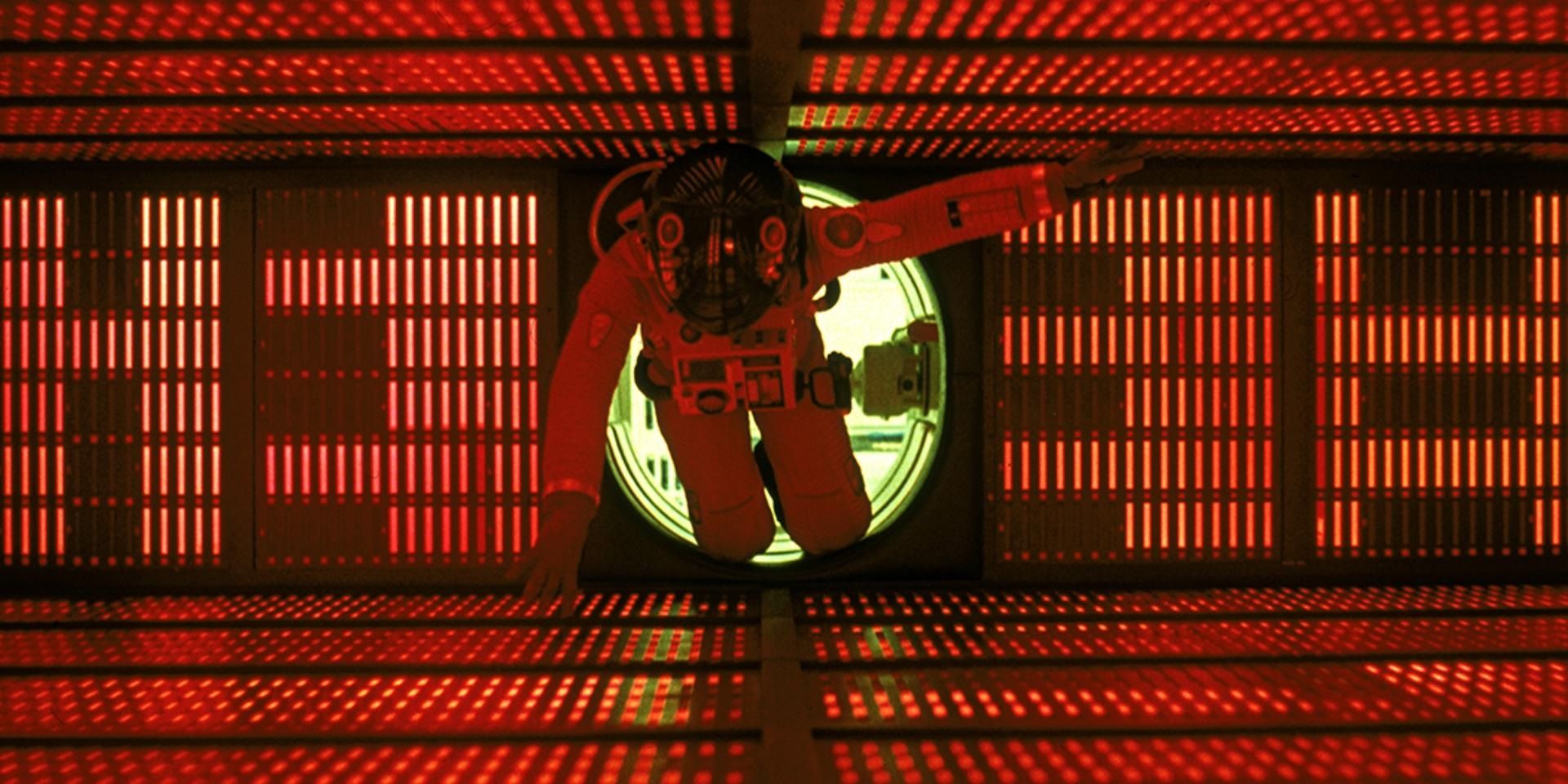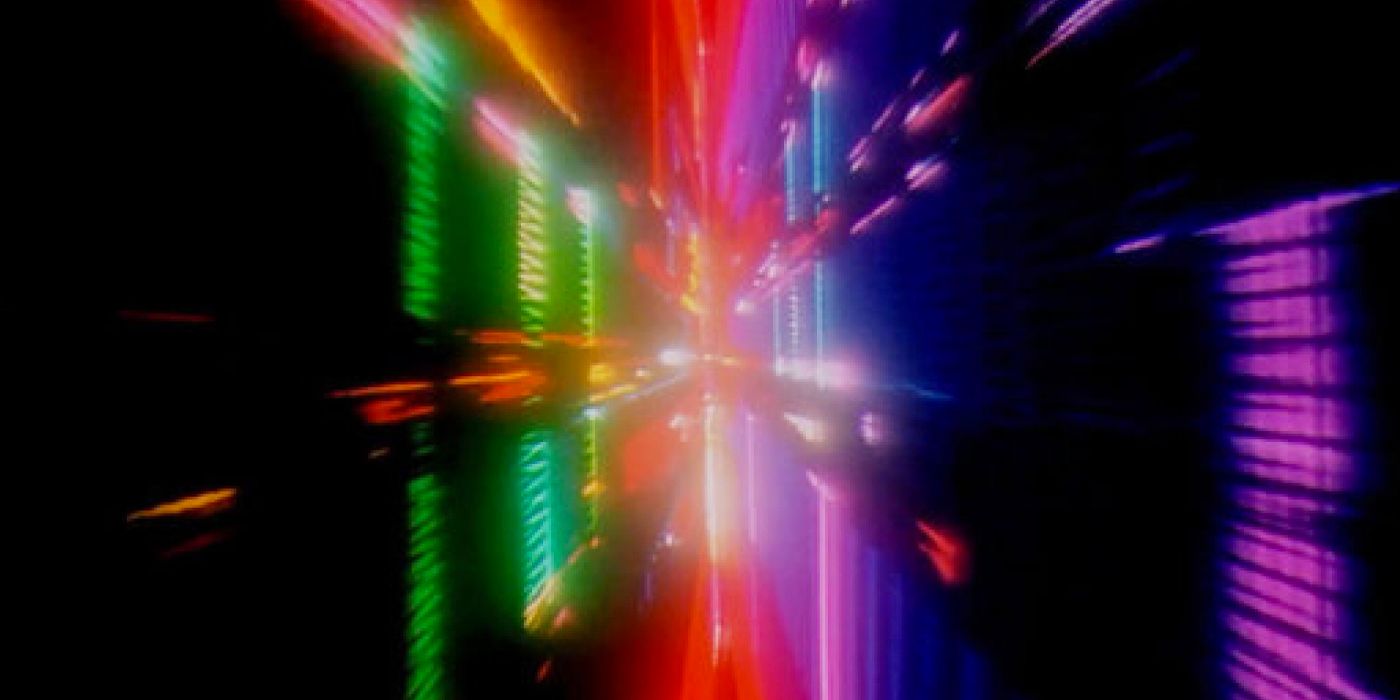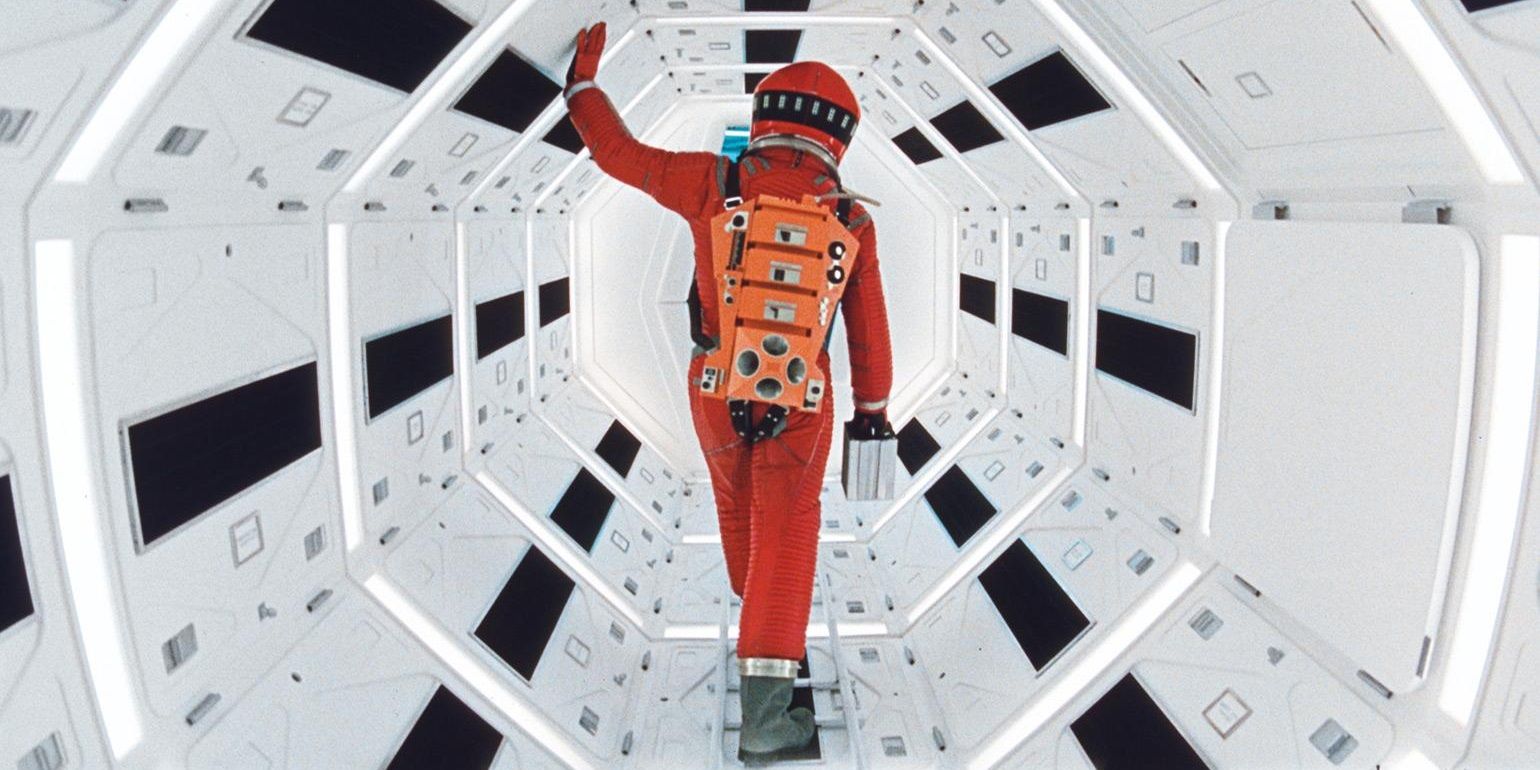The special effects in 2001: A Space Odyssey didn't involve CGI — director Stanley Kubrick accomplished the impressive illusion of weightlessness and space travel in the sci-fi movie using groundbreaking (and very expensive) cinematic techniques. Unlike many classic sci-fi movies, the effects in 2001: A Space Odyssey still hold up today: From the floating pen to the rotating rooms, Kubrick infused his movie with numerous visual elements to develop the feeling of being in outer space. In fact, the effects are often so convincing, it's easy to forget that this movie came out in 1968.
It's difficult to overstate the cultural significance of 2001: A Space Odyssey — a sci-fi movie that set a new bar for not just special effects, but also for artistic merit — paving the way for other experimental mainstream films, as well as the smart sci-fi movie sub-genre. Initially, the movie was a box office disappointment, famously not turning a profit upon its initial release; however, the film's breathtaking visuals made it the perfect title for repeat re-releases, and it would go on to earn upwards of (according to some estimates) $190 million.
Even today, 2001: A Space Odyssey is a picture people will see in theaters. In 2018, the movie was updated and rereleased as part of its 50 year anniversary celebrations. Director Christopher Nolan was involved in the project, promoting the film as one that significantly influenced his own filmmaking. Nolan, of course, has the benefit of computer-generated images for his blockbuster movies, but Kubrick had to pioneer all new filming techniques to achieve the visuals in 2001: A Space Odyssey — and the film's longevity as a cultural touchstone reflects just how impressive those new techniques were (and are).
2001: A Space Odyssey Used Models For The Spaceships
Like other sci-fi titles from this era, 2001: A Space Odyssey relied on large, detailed models to create the appearance of spaceships. These models were quite large, ranging from 2 meters across to the 17 meter (or 55 foot) massive model of the Discovery One. These models were filmed — sometimes stationary shots, sometimes with the camera in motion — and then the shots were matted using various techniques. In some cases, the effects team had to resort to rotoscoping (a technique of hand-tracing an image frame-by-frame — like in the He-Man cartoons).
2001: A Space Odyssey Used Massive, Rotating Sets
Kubrick based the visuals in his sci-fi movie on real scientific theories regarding physics in space. One such theory was that artificial gravity could be created through centrifuge. As a result, the interior shots of the spacecraft — particularly Discovery One — are filmed to give the illusion of the spaceship rotating. In reality, the room really was spinning: Kubrick spent $750 000 of his budget to construct a giant rotating wheel that could be used to house sets. The items within the rooms had to be affixed to the wheel and the whole thing would move as needed. A camera could be attached to the wheel to rotate as the room rotated, or a dolly could be used to keep the camera on the character(s). The former gave the appearance of one walking up the walls while the latter showed the room moving.
Understandably, having a set that moved introduces complications. In the scene where Dr. David Bowman (Keir Dullea) approaches Dr. Frank Poole (Gary Lockwood) on the other side of the room, Lockwood is actually strapped to his seat while the room moved (otherwise, he may have fallen out). In some scenes, the rotation was used to give the appearance of weightlessness. For example, in the scene where the stewardess appears to walk up the wall, the camera is being turned in tandem with the room so that the set appears stationary.
2001: A Space Odyssey Used Wires (& Tape) For Zero-G Effects
Throughout 2001: A Space Odyssey, Bowman and Poole are shown floating weightlessly, indicating the zero-gravity environment. This practical effect was actually achieved using wires and clever camera placement. In most cases, the actor (or stunt person) was suspended on wires on one side, and filmed from the opposite angle so that the wires were blocked from view. The wires were moved and jerked by stagehands off-screen. In some cases — like the image of Poole's body drifting through space — the scenes were filmed using slow motion capture to enhance to look of weightlessness.
A noticeable exception to this is the pen seen floating in the air on the space shuttle. A stewardess — shown wearing specialty shoes — walks over to the pen, plucks it out of the air, and puts it in the sleeping passenger's pocket. This effect was actually achieved using double-sided tape and glass: The pen was stuck to a circle of glass via tape, and the glass was rotated and moved.
2001: A Space Odyssey - Trippy Star Gate Sequence Used Slit-Scan Photography
Arguably the most impressive special effect in 2001: A Space Odyssey is the trippy "Star Gate" sequence (the one that attracted all those college students upon release). The effect was achieved by using a film technique known as slit-scan photography (as well as shooting various paints and chemicals moving in a pool). While the slit-scan process predates Kubrick's film, Douglas Trumbull, the special effects supervisor, adapted and expanded on the technique in new and exciting ways. Without getting too technical, the process basically involves a camera filming through a slit, but Trumbull innovated the process by moving the slit to outside of the camera, which he has described as making the camera "inside-out" [via Vimeo]. The slit is an opening in the "mask" that's placed between a camera and an image being filmed, and the camera and object are moved in various directions for artistic effect.
For 2001: A Space Odyssey, Kubrick used literally thousands of different geometric images, like optical illusion paintings and even electron-microscope pictures of crystal structures. In order to achieve the the effect, the slit-scan filming required the room to be completely blacked out, with a light source on the side of the artwork opposite the camera. Kubrick also used various production and post-production techniques of the day for the sequence, like using various color filters and negatives to create the psychedelic look of the landscape shots and closeups of Bowman's eye.
2001: A Space Odyssey - Other Special Effects
Kubrick used other practical effect techniques throughout 2001: A Space Odyssey, for various reasons. For example, the entire opening sequence that's set in Africa was actually filmed in a soundstage in London. Wanting to avoid the look of obvious matte paintings, Kubrick actually projected images of African landscape onto the background using a complicated method of projection and mirrors. Essentially, a large projector was built and placed strategically, along with a specialty mirror, so that it would bounce an image onto a backdrop of retroreflective material in the background. Minimal light from the projector (i.e. the background image) bounced off objects in the foreground (although it is responsible for the leopard's eyes glowing in the "Dawn of Man" scene).
Several special effects techniques were pioneered for 2001: A Space Odyssey, and remained in use in the industry for decades. This is a testament to the passion Kubrick had for his craft. A gifted photographer himself, the director brought a unique appreciation of the medium to his projects. It's no wonder then that movies like 2001: A Space Odyssey remain such fixtures in popular culture — and that Kubrick's skill with a camera is still remembered, and appreciated, today.

